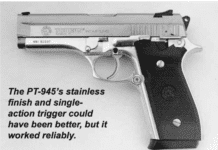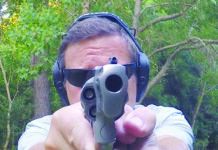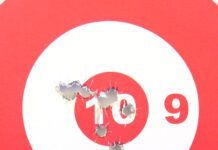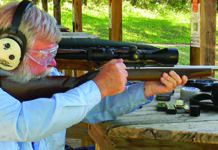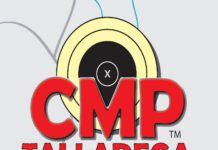Re “Barrel Firelapping Revisited: Beartooth
Bullets Kit Examined,” June 2012
I have some comments and questions re: the article on firelapping.
1.) You state that the first results with the Cabela’s 45 were “disheartening” because the groups were smaller. Aren’t smaller groups good?
2.) Your assumption seems to be that the varying resistance felt with slugging is due solely to variations in barrel diameter. I think this variation in resistance could (in theory) also be affected by variations in frictional coefficient (e.g. roughness). Air-gauging or borescopic inspection may have been informative.
3.) Previous readings on fire-lapping or fire-polishing suggest that most of the “polishing” takes place at the mouth or leade of the barrel.
4.) You mention both the NECO and Beartooth systems but do not mention the Tubbs Final Finish system, which offers the benefits of pre-coated bullets and coated 22 rimfire ammo. I have used this system and found it both effective and easy to use. —Bart Frechem
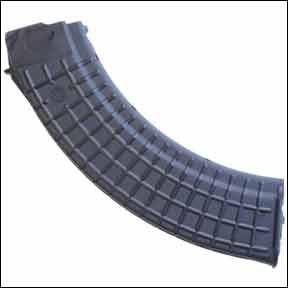
Mr. Freechem: Although the Cabela’s 45 groups got smaller, they were not the tiny ones I had seen others achieve via this process. I had seen a fellow writer do far better and also the examples provided by Beartooth had been better. Hence my disappointment. I have since learned there are limits to what can be achieved depending on things like fitting of the cylinder to the gun, etc. Next, I apparently didn’t make it sufficiently clear that the felt slugging resistance can come from many things, such as barrel roughness as well as cramping from later machining processes. Also, the tighness can come from lead or metal fouling left in the bore before slugging, and that’s why the bore must be absolutely clean before checking it. The Beartooth manual details exactly what and how the lead slugs accomplish removal of metal down the bore, not just at the leade. I suggest you get that manual and read it.
Have never heard of the Tubbs system, but am aware that firelapping goes back at least two decades, well before NECO hit the scene. In fact the mountain men were most likely aware of it, in that shooting a few grit-fouled balls made it easier to load their rifles next time. —Ray Ordorica
Re “Little-Known 1911s,” May 2012
Is it Ray Ordorica who carries the Valtro pistol? My question is did he have it “perfected” by John Jardine (or someone else), or does he carry and shoot it box stock? Is it still the best production gun out there? Your opinion is much valued. —Dave Licht
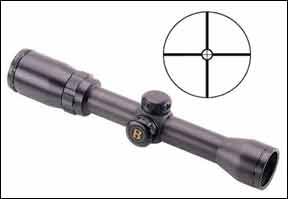
Dave, I saw Valtros listed for sale at $7000 back in 2009. One listed at $5,000 sold quickly — this for a gun which sold initially for about $1200, so you can see how they appreciated in value. In 2006 you could buy one for $2500. The one I have is essentially box-stock, though I had John fit night sights and install a non-ambi safety. No, I don’t carry what today might be a $10,000 handgun. The Valtro needed absolutely nothing done to it aftermarket, one reason why they get high praise. The Valtro 1998A1 is still the best production 45/1911 I’ve seen, but they are no longer made. — Ray Ordorica
Re “Firing Line,” March 2012
The letter from Dr. Greg Vermeychuk stated that, in his opinion, the “waffle pattern” plastic mag of Bulgarian manufacture, identified by two concentric circles with the number “10” molded into the mag body near the base plate, was far better than the stamped magazines. I would like to try these mags but have been unable to find a supplier. Can you help me?
— L. B. Conley
Miramar Beach, Florida
The Mag Arsenal, Inc. AK-47 40-round Bulgarian Waffle Pattern “Circle 10”-branded magazines shown below are available at CheaperThanDirt.com ($46.26, No. 2-MGAIM47W40).
— Todd Woodard
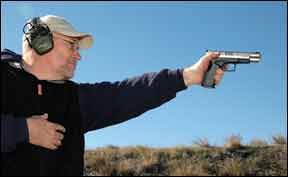
Re “Military Replica Rimfire
Rifles: Mossberg, Citadel,
and ISSC,” May 2012
In this issue you tested the Mossberg 715T with a 4X scope that is pictured on page 12. You failed to mention what brand of scope it is. Can you please tell me what brand scope it is and where I can purchase one like it?
—Mitch Cameron
Jacksonville, Texas
The Mossberg on page 12 was not shown with the 1-4X scope that we used for our bench session. In this photo we’ve added the carry handle mount that comes standard with the 715T and mounted a Sightron S33-4R red-dot scope. It’s available at Midway.com for $233.92, No. 291505. For accuracy tests, we used a Bushnell Banner 1-4X32mm scope with circle-X reticle, No. 71-1432, shown below. (It’s available at CheaperThanDirt.com as No. 2-BS711432, $71.77). We are sorry if the picture was misleading. —Roger Eckstine
Re “Semi-automatic Rifles:
We Test CZ, Remington,
Savage Rimfires,” April 2012
In this issue, you had a picture of Varmint targets by Fabriman Specialties LLC. You got a line on how I could buy one of these? A quick Google search isn’t giving me much. Thanks and keep up the great work! —BigMike
Larry Spikes is the fellow who deals the mechanical varmint targets. Call him at (903) 926-9262 for more information. You can see an installation in place at American Shooting Centers in Houston. —Roger Eckstine
Re “Practical Match Pistols:
Pro9, P30L, and G34 Gen4
Compete,” June 2012
At the end of the section on the Glock 34, you suggest that the Glock 17 Gen 4 would be a better choice for everyday use. Is this only because of the longer sight radius for the Glock 34? If I were to purchase the Glock 17 Gen 4, would you recommend the 10- or 17-round magazine?
—Clio Harper
I mentioned the Model 17 because it is shorter, so it’s easier to carry in a holster or maneuver inside an automobile, but still offers a full-size grip and full-size sight radius. The compact Model 19 and the subcompact Model 26 are smaller pistols for when deeper concealment is a priority. I would have both magazines. Load the big mag for inside the house or car. When carrying concealed, the 10-round magazine will make the gun a lighter package.
—Roger Eckstine
What are the chances the Springfield XDM 5.25 Competition can be included in future tests of 9mm competitive pistols? I am ready to buy one and would really like to know the experts’ thoughts and the accuracy of the model. I’ve been reading the 9mm is the most consistent in accuracy, followed by the 45 and last, the 40. I would really like the 40, but haven’t seen anything promising on accuracy. I have yet to find a reference that has all three side-by-side.
—Jim Lohrey
The XDM pistol we tested in the February 2012 issue (above) was the 5.25 Competition series pistol. It got an A- grade, along with two CZ pistols. We said of the Springfield, “Whereas the XDM 5.25 is more expensive than the G34, one of the more costly upgrades, high definition sights, was already in place. So is a standard guide rod and recoil spring system that’s easier to work on than a sealed unit. Experimenting with matching ammunition to recoil spring rate is a common first step to race setup. It shouldn’t be long before competitors and shade tree mechanics have this gun tricked out. For example, with the grip safety in place we would be less hesitant to have the trigger lightened considerably than other DAO-type pistols.” For more, see the article “9mm Practical Shooting Pistols: Glock, Springfield, and CZ USA” in that issue. Regarding accuracy as it relates to caliber, the shooter’s ability to control the pistol has much to do with the results. 9mm pistols are inherently easier to control. Thus, they are generally more consistent shot to shot. —Roger Eckstine
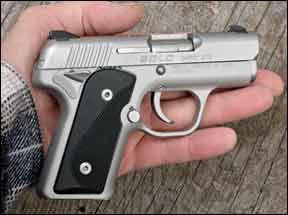
Re “9mm Carbine Matchup:
Kel-Tec, Thureon, MechTech,
& Norinco,” June 2012
Why leave out the Hi-Point 995? Rock-solid shooter, made in the U.S., lifetime “no question” warranty that transfers, +P rated, accurate, multiple factory configurations, aftermarket accessories. MSRP $285 bare, $419 fully decked? Also comes in 40 S&W and 45 ACP. No-brainer. —Rod J.
Mainly, we didn’t include the 995 this round because it was tested in February 2002 and got a Best Buy rating (above right). See “9mm Carbines: Hi-Point Takes On Ruger In Self-Defense Showdown.” From that article’s recommendation: Our sample performed much better in this test than in a previous evaluation (December 1997), showing an improved trigger, better accuracy, and flawless function. If all the Hi-Point carbines are as good as this one, then it’s a steal.” Since it’s largely unchanged, we didn’t feel it was necessary to cover the same ground again. And the writer, Bob Campbell, said, “Also, we covered the differences in converted SMG’s (UZI), AR variants, (Thureon) and purpose-designed civilian carbines (Kel Tec). So, this test was as much about genres or types as the specific carbines. —Todd Woodard
Re “Options for Concealed
Carry: Two Nines Vs. a Forty
Wheelgun,” July 2012
What is the point of the Taurus 40 S&W snubbie revolver? My Taurus 617SS2 is lighter and holds two more rounds of 357 Mag or 38 Special. And no messing with moon clips. I guess if one has cheap or free 40-cal. ammo, it’s ok. —Randy Cornman
I read your article on concealed carry handguns and was interested in seeing that the Kimber Solo received an A- rating and “won” the contest.
When this pistol was released, I was very interested in it, but, as with any new gun, I wanted to get some professional opinions before buying. I also noted that it was almost impossible to find a Kimber dealer near here who could get one that I could actually see and examine myself. While waiting for the chance to actually see one of these pistols, I read what I could. As I recall, all the articles admired the concept but found problems with the pistol. Everything from trouble working the slide due to spring tension to cut hands from the design was mentioned. The few people I met who had actually seen the pistol were not impressed with its function either, and none of the local dealers seemed at all interested in getting one unless it was sold in advance of actually seeing it. As I recall, I read an article in your publication (I may be mistaken, but I thought it was yours) that seemed to confirm this opinion. As a longtime subscriber who has used your opinions both personally and professionally, I decided to pass on the Kimber. It seemed to be too much like Colt’s new-concept automatic to replace the 1911, which some police friends of mine bought with disastrous results.
Now I am curious as to what happened to change this “not recommended” pistol into a “should buy winner.” I have shot several Kimbers and like them a lot, so I was originally surprised at the reaction to the Solo by the writers. Did Kimber “fix” the gun? Did I imagine all this? Should I now again be interested in the Solo? Please respond and help me with some advice.
—Bill Meyer
Hendersonville, NC
Ray Ordorica tested the first Kimber Solo tested in the May 2011 issue, giving it a grade of B, which in my book does not mean “not recommended.” Nevertheless, there was a period during which the manufacturer re evaluated the pistol which no doubt contributed to the scarcity of supply.
The Solo I tested for the July 2012 issue was from a subsequent run. Sharp edges didn’t seem to be a problem, but the heavy pull necessary to manually work the slide appears to be inherent in the design, something the owner will just have to live with. Otherwise, I found the Kimber Solo to be an impressive little pistol. —Roger Eckstine




